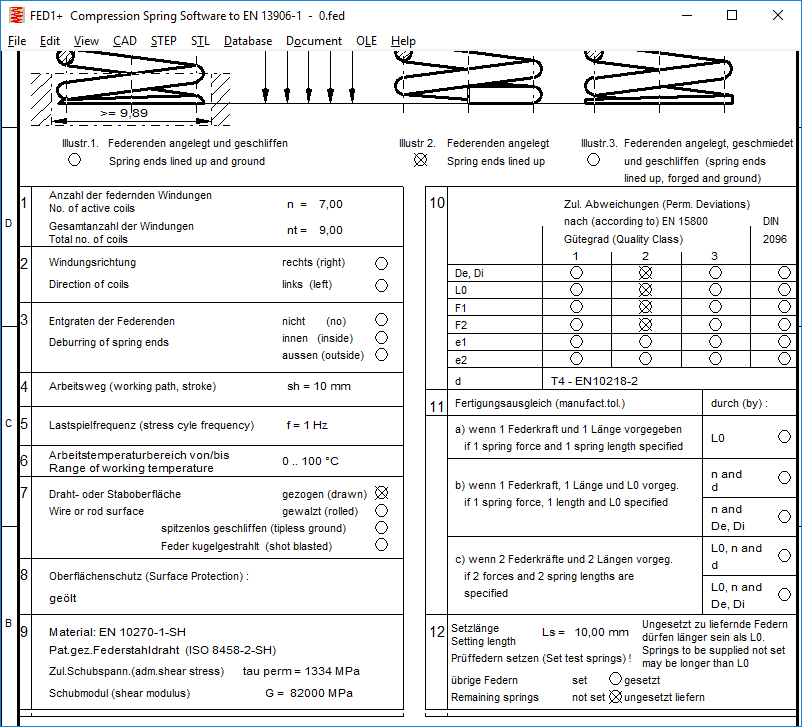
 | English
| Deutsch
| English
| Deutsch
FED1+, 5, 6, 7, 17: Production Drawing German/English
Production drawing in dual language German/English can be generated for compression springs now (View, Print, CAD DXF/IGES).

FED3+: 3D Centerline as STEP file
Centerline of torsion spring can be generated as STEP file to the loaded into CAD.
FED9,10,13,14,15,16: Incoloy A-286
Incoloy A-286 (spring temper and spring temper + aged) has been added in the material database fed9wst.dbf.
FED1+, 5, 6, 7, 17: Production Drawing International DE,EN,FR,IT,SV,PT,ES,NL
Production drawing of compression spring can now be generated in German, English, French, Italian, Swedish, Spanish, Portugues and Dutch language.
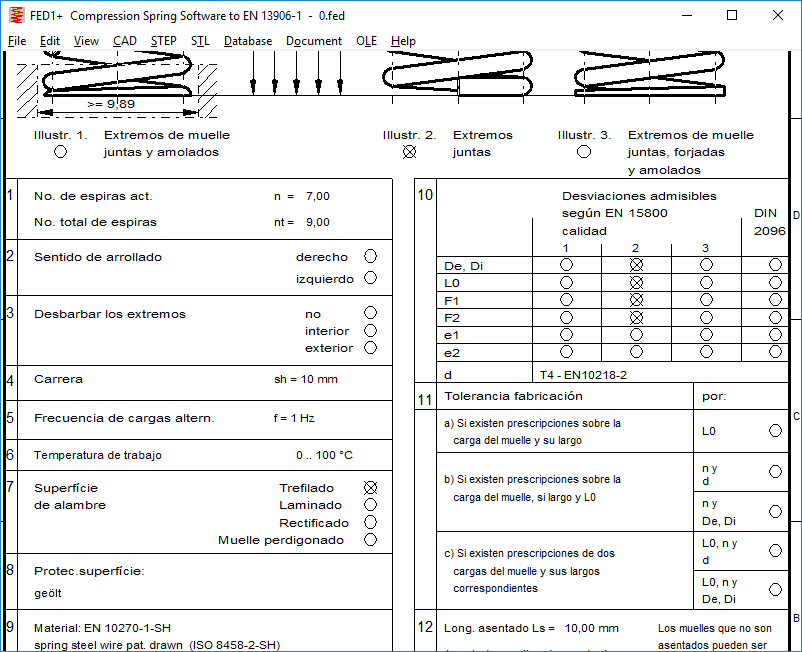
At "View -> Production drawing International" you can choose the desired drawing language.
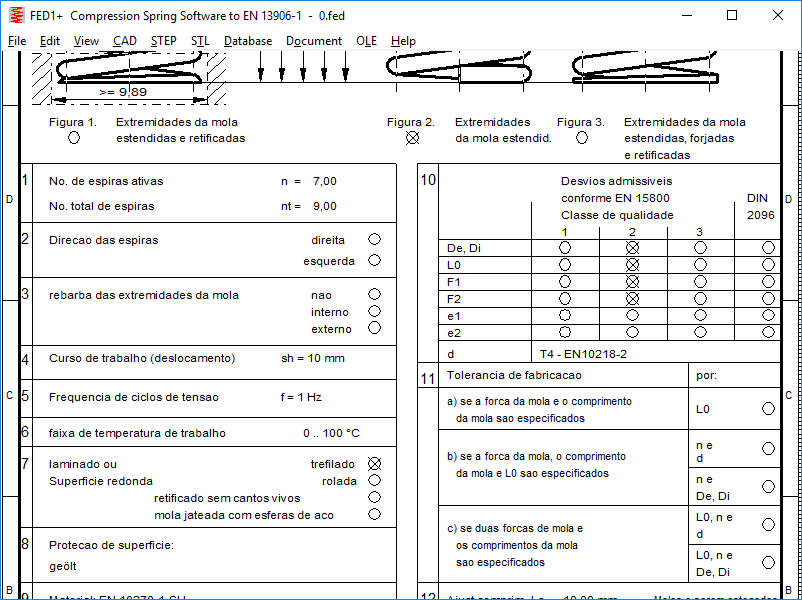
FED2+: Production drawing International DE,EN,FR,IT,SV,ES,NL
Production drawing of extension springs can now be generated in German, English, French, Italian, Swedish, Spanish and Dutch language.
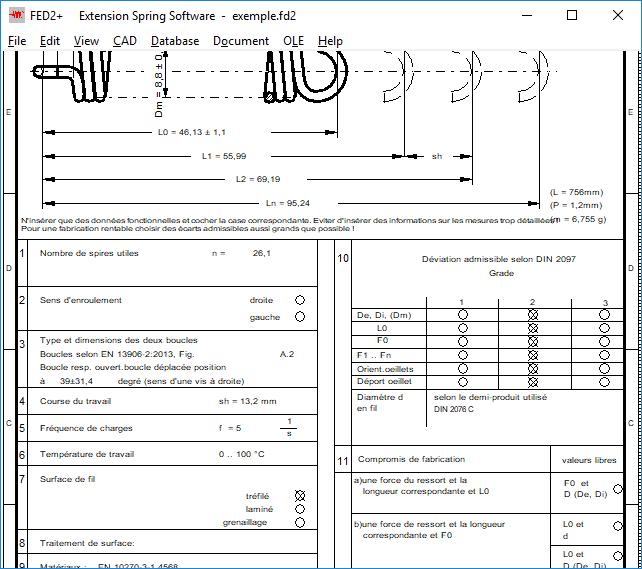
FED4: STL Disk Spring
Disk spring can be generated as 3D STL model now.
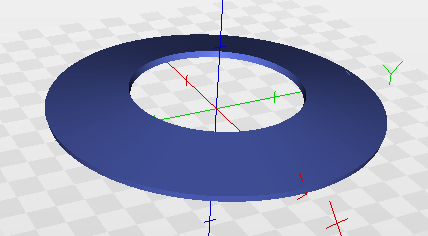
FED1+,2+,3+,5,6,7,8,11,17: "OTEVA 91 not nitrided" modified
Strength properties for Goodman diagram of OTEVA 91 (VD-SiCrVMo) were too low in not nitrided state, because data strength values were based on d=1 instead to d=3.85mm. Data in fedwst.dbf have been corrected. Thanks to Mr. Gaedtke of HAWE Hydraulik for his hint.
FED1+,2+,3+,5,6,7,8,11,17: OTEVA 74 SC, OTEVA 76 SC, OTEVA 96 SC
3 new OTEVA valve spring wires have been added to the fedwst.dbf spring wire database:
OTEVA 74 SC is an oil tempered SiCr-alloyed valve spring wire, shaved. Tensile strength and fatigue resistance is eaqual with OTEVA 75 SC (VD-SiCrV), but until 200°C only.
OTEVA 76 SC is an oil tempered SiCrVNi-alloyed valve spring wire, shaved. Tensile strength and fatigue resistance is the same as OTEVA 75 SC (VD-SiCrV)
OTEVA 96 SC is an oil tempered SiCrVMo-alloyed valve spring wire, shaved. Tensile strength and fatigue resistance is the same as OTEVA 90 SC (VD-SiCrVMo)
The strength properties of OTEVA 90, 91, 96 are the same.
We have no relaxation charts for the OTEVA materials. In the data sheets there are such, but for preset springs only. Relaxation chart in data sheet shows that there is no further relaxation if working temperature is below 100 °C.
FED11: STL Model
FED11 generates a 3D model of the calculated spring lock or bushing as STL file now.
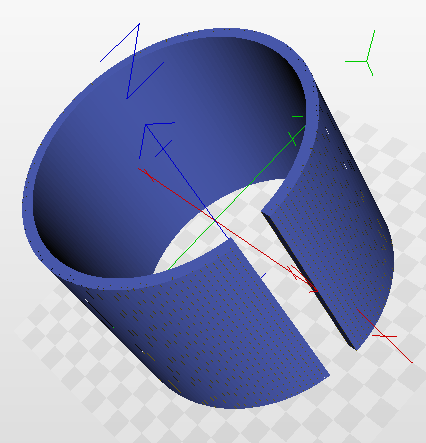
FED1+,2+,3+,5,6,7,8,11,17: Hot-rolled spring material to EN 10089
In EN standards there are 2 sources for the permissible shear stress of hot-formed compression springs: in EN 13906-1 (10.1.2) there is a diagram for tauzul depending on the wire or rod diameter, but irrespective of the material. EN 10089 includes min/max tensile strength of various materials, but irrespective of the diameter. The program calculates tauz = 840-250 * log (d/20), derived from the diagram in EN 13906, and tauz = 0.56 * rm to EN 10089. The smaller of the two values is used for calculation. Since this is usually the value of the EN 13906, the values from the database remain virtually ignored. Nevertheless, the material database FEDWST.DBF has now been modified that the tensile strength Rm depends on the diameter of the wire or rod. In adaptation to the diagram from EN 13906, Rmmin applies to d = 60mm and Rmmax for D < = 10mm. In the tau-d diagram, the curve for tauzmax is now additionally drawn in accordance with EN 13906 (if hot formed springs only). In the previous version, it was not possible to see where the value tauz comes from. For 38Si7 and 51CrV4, the curves are almost identical, whereas for materials of higher strength (e.g. 60SiCr7) the tauz curve from the database is significantly higher than the tauzmax curve according to EN 13906. In a later version, maybe we could add an option to ignore the permissible shear stress according to EN 13906 and use the higher value from the database instead, if there are reliable facts. I would be happy to accept suggestions and measured values from you.
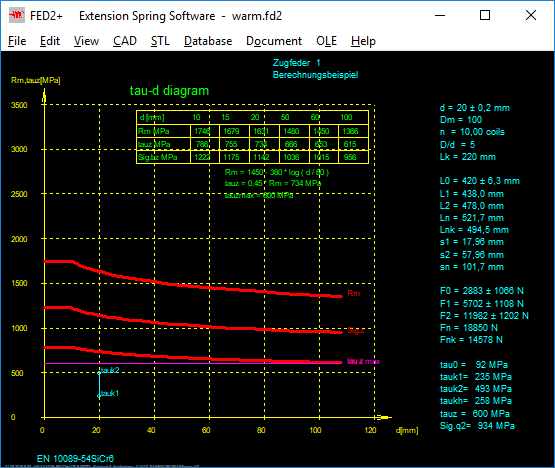
For tension springs, tauzmax = 600 MPa is indicated for hot formed springs according to EN 13906, irrespective of wire or rod diameter. Else, tauz = 0.45 Rm should be used for tension springs according to EN 13906. FED2+ uses the smaller value of 600 MPa and 0.45 Rm. In most cases, 0.45 Rm is larger than 600 MPA, so the permissible shear stress for most hot-formed tension springs is Tauz = 600 MPa.
FED8: Torsion bar in egg shape
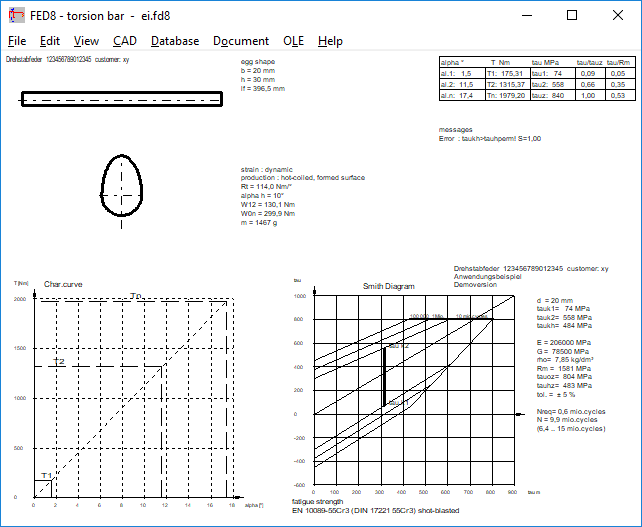
An egg-shaped cross-section is composed of a semicircle and a half ellipse. Thus also the mass moment of inertia and the polar area moment of inertia is calculated, as the sum of half circle and half ellipse. However, this is just an approximation.
GEO1+, TR1: Ellipse and Egg-shape
Generating of ellipse and egg-shape has been added in GEO1+ and TR1. GEO1+ calculates area moment of inertia, center of gravity and mass moment of inertia. TR1 additionally calculates bending curve and bending stress of the special shaped girder.
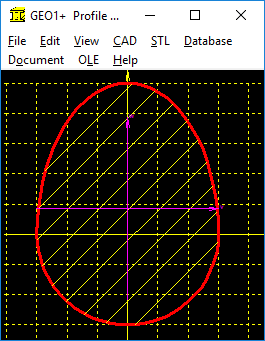

TR1: Quick3 and Quick4 View
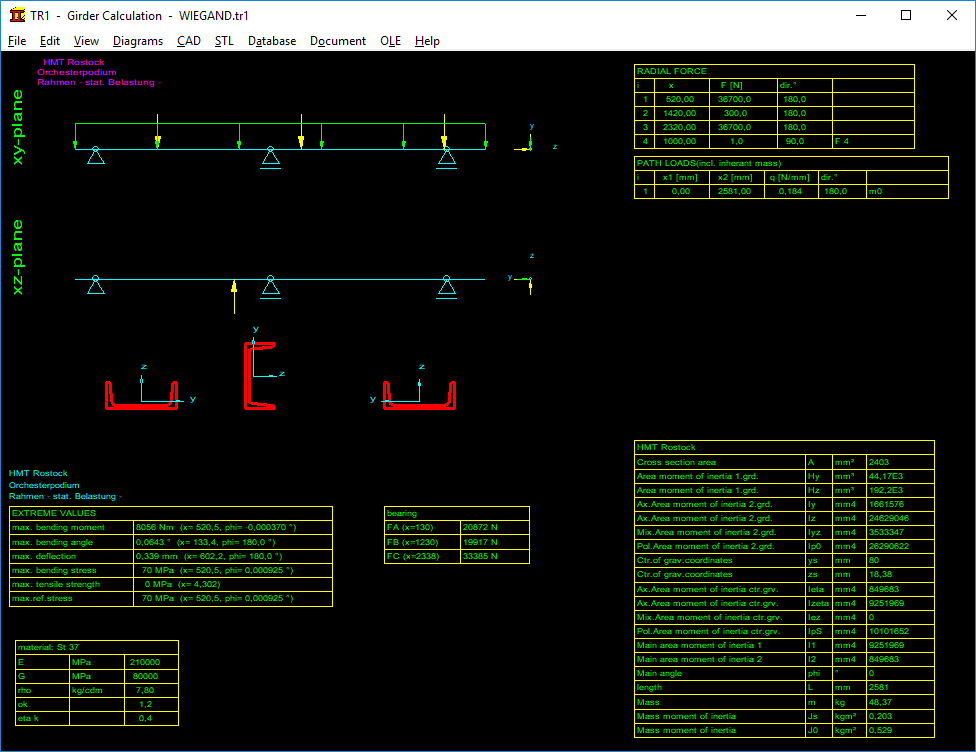
Quick3 View and Quick4 View has been added to girder software TR1 with drawings of cross-section, bedding and loads, tables with input data and calculation results, altogether on one screen.
WN2+: Configure drawing with/without bore
If the tooth profile is used for conversion into a CNC program or for wire eroding, the drawing must be displayed without a bore hole. On the other hand, if you want to create an STL model on the 3D printer, you need the drawing with bore hole. For internal gearing, the bore hole diameter dB means the outer diameter of the hub (negative sign). There is also a new help picture, this one now belongs to WN2, 4, 5, 6, 7, 8, 9, 10, WNXE, WNXP, ZAR1 +,4, 5, 7, 8, ZARXP, ZAR1W.
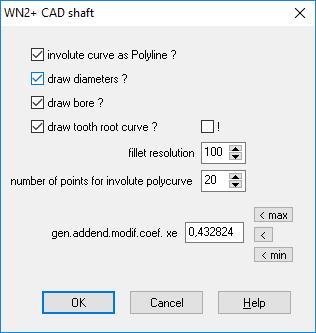
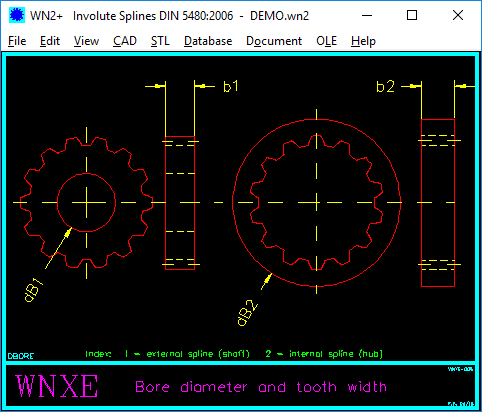
ZAR4, GEO4: Half ellipse (Egg shape)
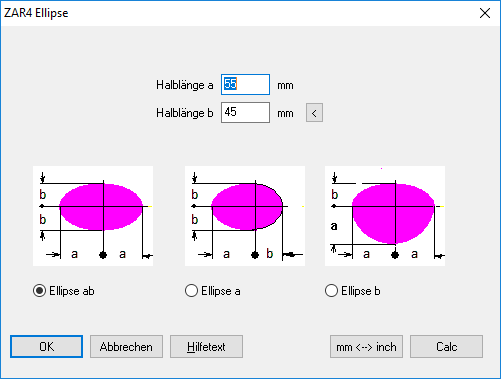
At ellipse gear input, you now also can generate an egg-shape gear composed by a half ellipse over 180° and a semicircle. Three types can be generated: Full ellipse, half ellipse with small radius semicircle, and half ellipse with large radius semicircle.
ZAR4 – center distance shift for flank clearance
Unlike round gears, the backlash is not adjusted by a flank tolerance, but by the center distance in the case of noncircular gears. Therefore you can now enter a center distance. This must be slightly larger (backlash/tan alpha) than the calculated center distance. In gear drawing and gear animation, the modified center distance is used now instead of the calculated zero-backlash center distance.
ZAR4 – DXF Import
The pitch curve of a noncircular gear wheel can be imported as a polyline in DXF format. If the polyline contains arcs, they are now taken in 1 ° increments.
ZAR4 – Printout List
Angle of rotation of gear wheels 1 and 2, radii, transmission ratio, speed and acceleration can now be displayed in 1 ° increments.
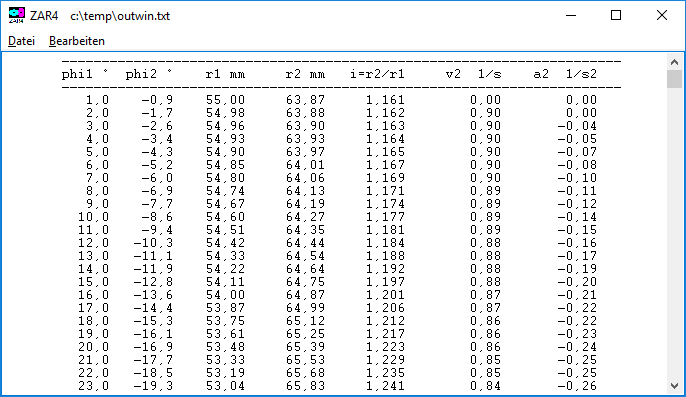
ZAR4: Free transmission ratio for non-circumferential gears
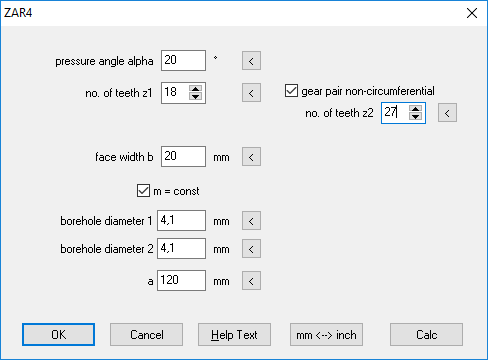
For circulating nonlinear gears, the total transmission ratio must be 1 or 2 or larger integer. If only a sector of the nonlinear gear is used, e.g. for a control lever, then this restriction can be reduced, the total transmission ratio can then have any value. This case can now also be calculated in ZAR4, for this case choose "gear pair non-circumferential" and enter number of teeth of the counterwheel. Tooth profile is not closed at phi = 360 ° and matching teeth no longer run together. But there are also exceptions: if the pitch curve of gear 1 is symmetrical, the gear pair is also running if the total transmission ratio is 1.5 or 2.5.
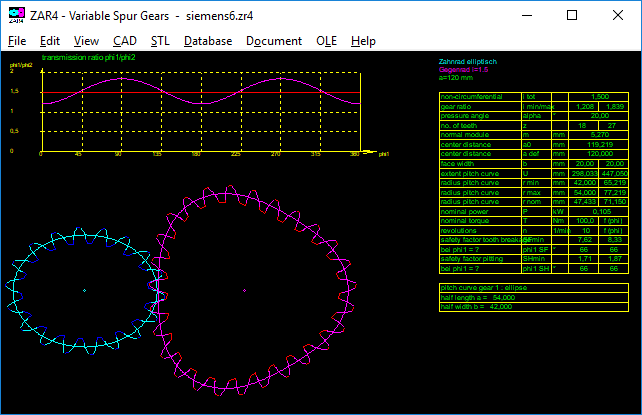
See calculation for elliptic driving wheel with generated counter wheel for total transmission ratio of 1.5.
ZAR1+, ZAR1W: Draw tooth root fillet trochoide settings
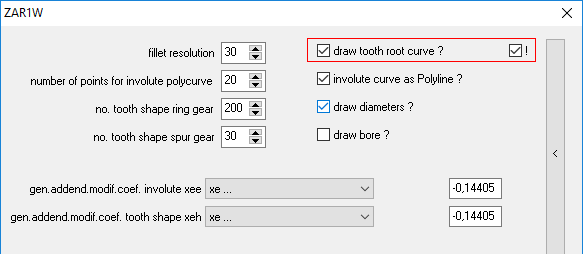
If the option "Draw tooth root curve" is set under "CAD-> Settings", then the trochoide curve generated by cutting tool will be drawn in case of undercut. Without undercut, fillet of the cutting tool is drawn. In rare cases (for "lace" gearing tools with a low frontal tooth width) there is a gap between the cutting tool shape (yellow) and the tooth fillet curve (red) in this drawing. For this case there is now a second checkbox (!) on the right, then a trochoide curve is always drawn. However, this option is not suitable as a permanent setting because, for example, involute splines according to DIN 5480 are drawn with a spike. Sometimes (but not always) helps in this case to increase the fillet resolution setting.
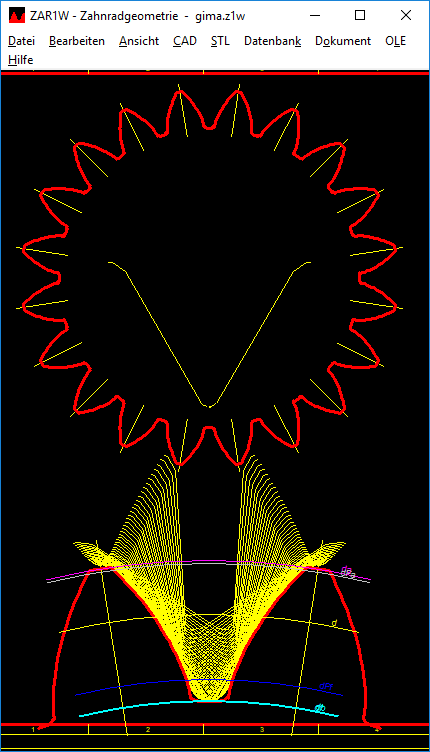
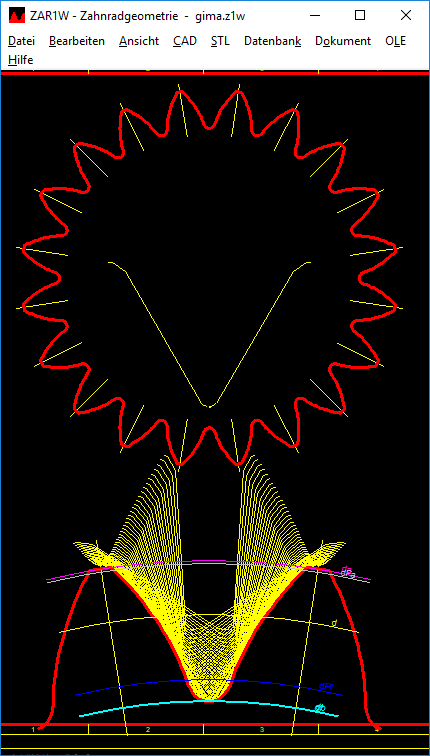
FED1+,6,7,10,WL1+,GEO1+,2,4,SR1+,TOL1,TR1,WN1,ZAR4: Improved Input Tables
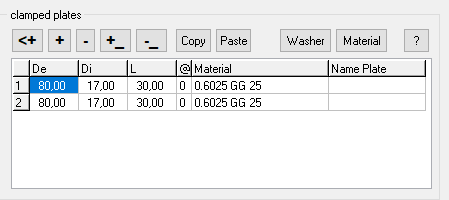
For tables for entering shaft sections at WL1 +, spring sections at FED6 and FED7, clamping plates at SR1 +, dimensions for GEO1 +, GEO2, GEO4, ZAR4, TR1, WN1, there are improvements to insert and delete rows, and export/import with Excel.
Buttons at input tables:
+: add new row
<+: add new row and copy data from previous row
- : delete last row
+_ : insert new row at cursor position
-_ : delete row at cursor position
Copy: copy marked cells into clipboard
Paste: fill cells with clipboard content at cursor position
New buttons are "+_" and "-_". Tables for large amount of data like dimensions in WL1+, TR1, GEO1+, GEO4, ZAR4, or load spectrum of gear programs additionally got a menu with import/export functions for data exchange with MS-Excel.
WN12 – New Software for Face Splines
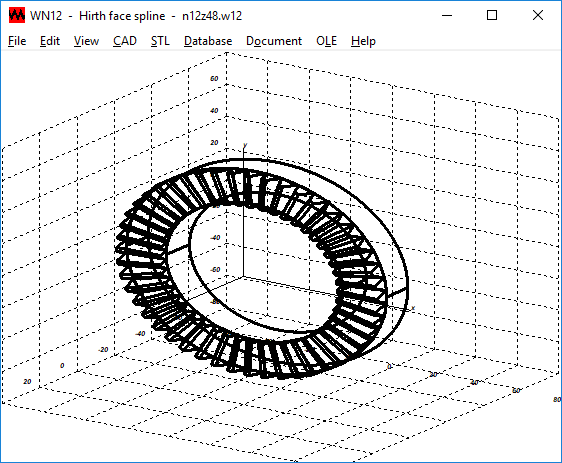
The new WN12 software calculates the dimensions of face splines. Outside diameter, inner diameter, teeth, fillet radius and tooth tip clearance and tooth gap angle are input data.
WN12 calculates the surface area, surface pressure and safety factor from torque, preload and material data. The tooth drawing is generated by the program and can be exported to CAD. A model of a ring with face spline can be made with 3D printers, WN12 generates an STL file for it.
Standard sizes can be selected from the integrated database. Alternatively, the dimensions for self-defined face splines can be entered directly.
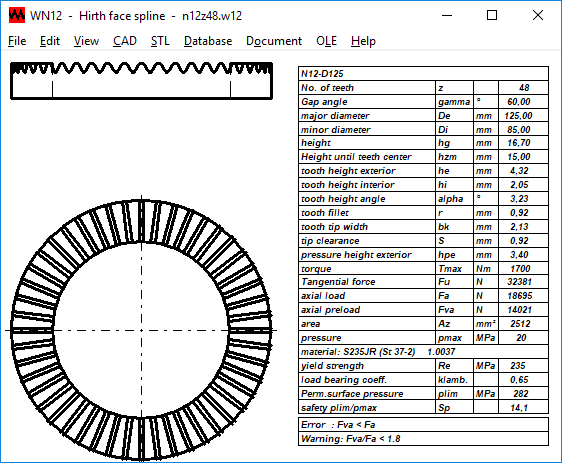
Because there is no ISO or DIN standard for face splines, you can display and print out the names and formulas used in WN12.
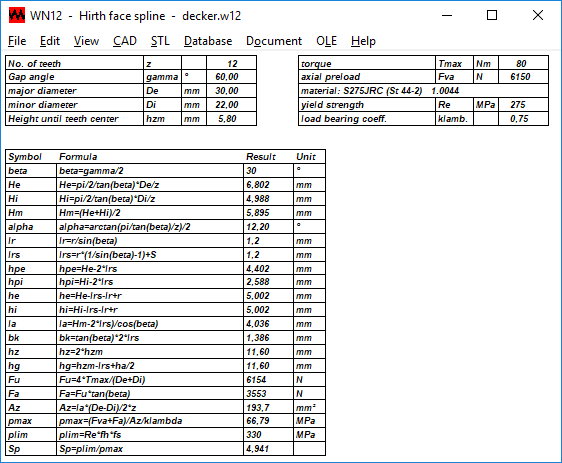
A production drawing with ISO 7200 data field contains profile drawings and tables with dimensions. The drawings can be printed or exported to CAD.